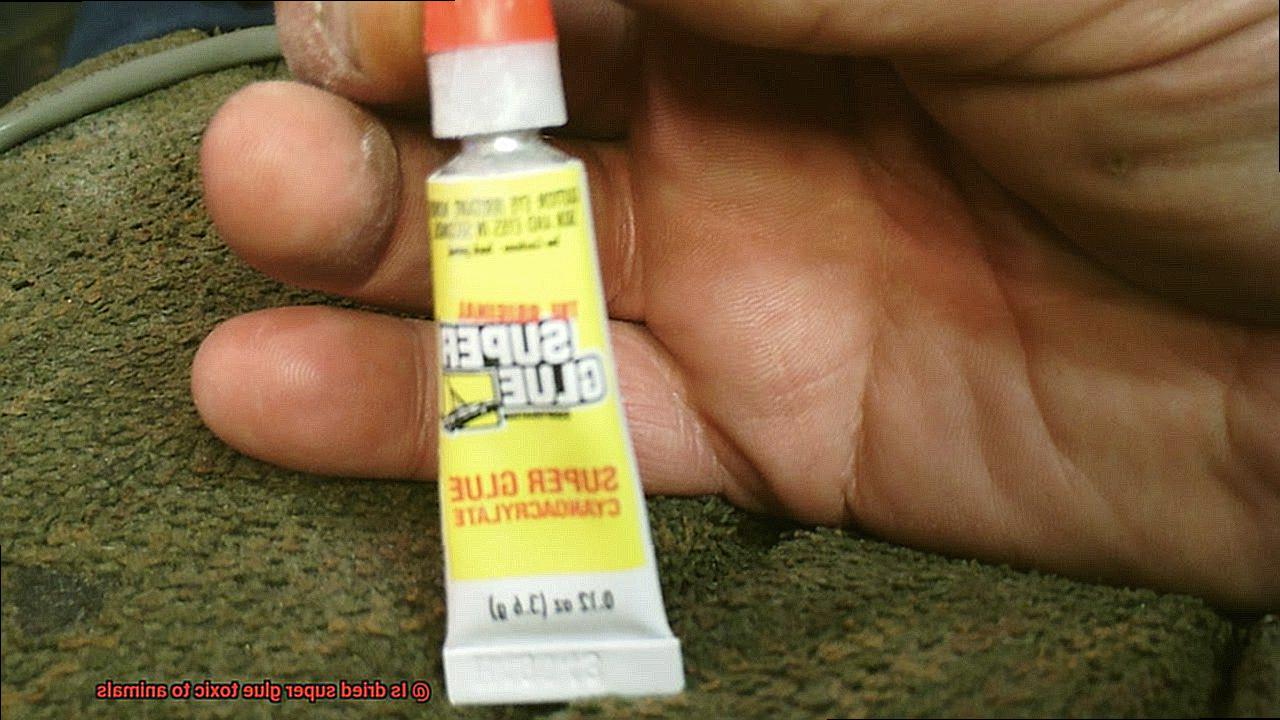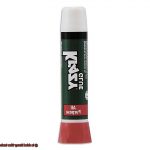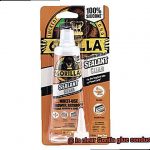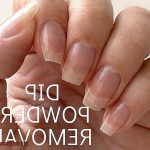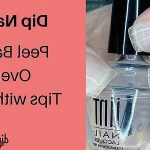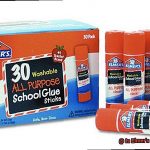Imagine this: you’re knee-deep in a DIY project, lost in a world of glue and creativity, when disaster strikes. A tiny droplet of super glue lands on your table, the floor, or even worse – your precious pet’s fur. Panic sets in as you ask yourself, “Is dried super glue toxic to animals?” It’s a question we often overlook, but the answer could be a lifesaver for your furry friend.
Super glue may work wonders for fixing things, but its hidden dangers for our beloved four-legged companions can’t be ignored. In this blog post, we’ll dig deep into the risks of dried super glue for animals. We’ll uncover the chemicals at play, the warning signs to keep an eye out for, and most importantly, how to handle these sticky situations with care and responsibility.
Get ready for some eye-opening insights that might just save your furry family member’s life. So buckle up and join us on this journey – because knowledge is power when it comes to keeping our pets safe from unexpected hazards.
Potential Hazards of Dried Super Glue for Animals
Contents
- 1 Potential Hazards of Dried Super Glue for Animals
- 2 Ingestion of Dried Super Glue
- 3 Skin Contact with Dried Super Glue
- 4 Eye Contact with Dried Super Glue
- 5 Respiratory Issues from Inhaling Fumes of Dried Super Glue
- 6 Prevention Tips for Pet Owners to Avoid Accidents Involving Dried Super Glue
- 7 Treatment Options for Animals Affected by Dried Super Glue
- 8 Conclusion
Cyanoacrylate adhesive, commonly known as super glue, is a powerful bonding agent found in many households. While it can work wonders for fixing broken items, it also poses significant risks to our beloved pets if not handled and stored with care. In this article, we will explore the potential hazards of dried super glue for animals and provide essential tips to safeguard our furry friends.
Potential Hazards of Dried Super Glue:
- Ingestion: Accidental ingestion of dried super glue can lead to blockages in an animal’s digestive system, potentially causing severe complications or even death. Small animals such as rodents or birds are particularly vulnerable as they may mistake dried glue for food or chew on it out of curiosity.
- Skin and Fur Irritation: Dried super glue can adhere to an animal’s skin or fur, causing discomfort and potential injury if they attempt to remove it themselves. Animals with longer fur or feathers are especially prone to having glue tangled in their hair or feathers, creating painful and difficult-to-remove clumps that may require professional intervention.
- Eye Irritation: If dried super glue enters an animal’s eyes, it can cause irritation, redness, and potentially damage the cornea if not promptly and properly treated. Immediate veterinary care is crucial if this occurs to prevent further harm.
Precautions and Actions:
Pet owners must be aware of the potential hazards posed by dried super glue and take necessary precautions to prevent their animals from encountering it. Keep glue containers tightly sealed and out of reach of pets.
If an animal comes into contact with dried super glue, seek veterinary care immediately. Attempting to remove the glue without professional guidance may worsen the situation and cause additional harm to the animal.
When using super glue in areas accessible to pets, work in a well-ventilated space and keep animals away until the glue has completely dried. This precaution minimizes the risk of inhalation and accidental contact.
Ingestion of Dried Super Glue
In this article, we will explore the potential health risks associated with the ingestion of dried super glue in animals and discuss essential precautions to ensure their safety. Brace yourself for a journey into the world of adhesive perils.
The Health Risks:
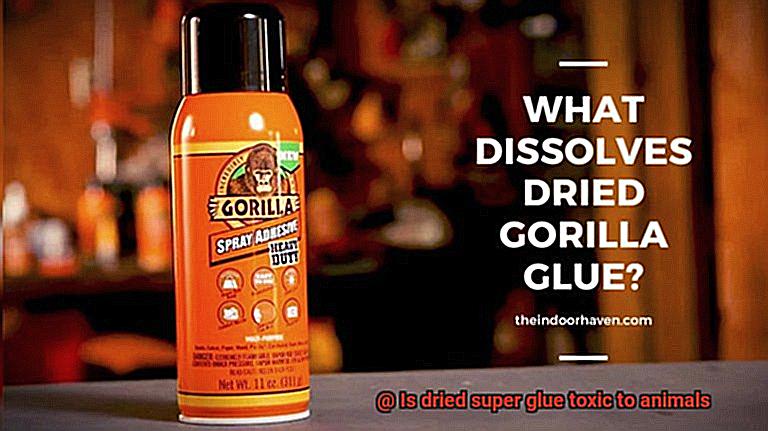
When an animal ingests dried super glue, chaos ensues within their delicate systems. The adhesive clings to the delicate lining of their mouth, throat, esophagus, or stomach, causing respiratory distress, difficulty swallowing, and even gastrointestinal obstruction.
Picture a sticky situation that can lead to coughing, wheezing, and a sense of suffocation as the glue’s fumes irritate their respiratory system. But that’s not all. Chemical burns can occur when the glue damages the lining of their gastrointestinal tract, leaving behind a trail of destruction.
Recognizing the Symptoms:
To protect our furry friends, we must be vigilant in spotting the signs of glue ingestion. Watch out for drooling, vomiting, loss of appetite, abdominal pain, difficulty breathing, and lethargy. These red flags should never be ignored as they may progress rapidly and become life-threatening if left untreated.
Seek Immediate Veterinary Care:
If you suspect that your pet has fallen victim to dried super glue’s clutches, don’t waste a second before seeking immediate veterinary care. Remember, attempting to induce vomiting without professional guidance can do more harm than good. Let the experts assess the situation and recommend the best course of action to save your furry friend.
Prevention is Key:
To shield our beloved pets from these adhesive nightmares, prevention reigns supreme. Here are some essential tips:
- Store glues and adhesives securely: Keep them out of reach of animals, especially those notorious for their chewing or non-food item ingestion tendencies.
- Promptly clean up spills: Accidents happen, but make it a priority to clean up any spills promptly to prevent accidental ingestion.
- Be cautious during glue usage: When using super glue, ensure your pets are kept away from the area until the glue has fully dried. This will minimize the risk of accidental contact or ingestion.
Skin Contact with Dried Super Glue
Prepare to be glued to your screens as we delve into the potential risks and treatments associated with skin contact with dried super glue. While super glue is a handy tool, it can pose a serious threat if it comes into contact with our delicate skin. Let’s explore the effects and arm ourselves with knowledge to navigate this sticky situation.
The Dangers:
Dried super glue contains a chemical called cyanoacrylate, which can cause irritation and burns on the skin. When it adheres to the skin, it creates a tight bond that can be difficult to remove without causing further harm. Not only is the glue itself toxic, but if ingested, it can lead to internal health issues.
Recognizing Symptoms:
Skin contact with dried super glue may result in immediate symptoms such as redness, swelling, and discomfort. In more severe cases, the glue can cause burns or ulcerations on the skin, leading to tissue damage and potential infection. It is essential to pay close attention to any signs of distress or unusual behavior.
Seeking Medical Attention:
If you find yourself stuck with dried super glue on your skin, it is crucial to seek medical attention promptly. Healthcare professionals have the expertise and tools necessary to safely remove the glue without causing further harm. They may recommend using specific solvents or oils to gently dissolve and remove the adhesive.
Treatment Options:
Depending on the severity of the reaction, treatment options may vary. In some cases, pain medication and antibiotics may be necessary to treat any secondary infections that may arise. It is important to follow medical advice closely and monitor your skin’s progress during the recovery process.
Prevention is Key:
To prevent accidents from happening in the first place, it is crucial to handle super glue with care and avoid contact with unprotected skin. Wearing gloves and protective clothing can provide an extra layer of defense. Additionally, keeping super glue securely stored and out of reach of children and pets can help prevent unintentional exposure.
Eye Contact with Dried Super Glue
Today, we’re delving into a distressing scenario that no one wants to face – dried super glue in your furry friend’s eyes. As an expert in animal eye care, I’ve witnessed the potential harm this can cause. So, let’s explore the risks, treatment options, and prevention methods surrounding eye contact with dried super glue.
The Dangers of Dried Super Glue:
Super glue is a potent adhesive that rapidly forms a robust bond. When it dries, it becomes rigid and brittle, posing significant risks if it comes into contact with an animal’s delicate eyes. The glue can adhere to the surface of the eye, causing irritation, pain, and potential damage.
Recognizing the Symptoms:
If your pet accidentally gets super glue in their eyes, there are telltale signs to watch out for. Redness, swelling, excessive tearing, and difficulty blinking or closing their eyelids properly may indicate contact with dried super glue. In some cases, the sharp edges of the glue can even cause corneal abrasions or ulcers.
Immediate Action is Key:
Time is of the essence when dealing with dried super glue in your pet’s eyes. Begin by gently flushing the affected eye with lukewarm water for at least 15 minutes. This will help remove as much glue as possible and minimize further harm. Remember to handle your pet gently during this process to reduce distress or injury.
Seek Veterinary Assistance:
After flushing the eye, it is crucial to seek immediate veterinary assistance. A veterinarian will assess the extent of the damage and provide necessary treatment. They may recommend further flushing, prescribe medication, or even perform surgery if required. It is essential not to attempt to remove dried super glue from your pet’s eye without professional guidance, as this can lead to complications.
Prevention is Better Than Cure:
To avoid this sticky situation altogether, take preventive measures. Store super glue and other potentially harmful substances securely out of your pet’s reach. Tighten lids properly and store them in a safe place. By being proactive, you can protect your beloved pets from accidental eye contact with dried super glue.
Respiratory Issues from Inhaling Fumes of Dried Super Glue
Super glue is a versatile adhesive that can fix broken items with ease. However, many people are unaware of the potential respiratory issues that can arise from inhaling the fumes of dried super glue. In this article, we will explore the risks and effects of glue inhalation, shedding light on how it can impact human health and the well-being of our beloved pets.
Understanding the Chemicals:
The key to understanding the respiratory issues caused by super glue fumes lies in the chemicals it contains. Cyanoacrylates, the main ingredients in super glue, release harmful fumes when they dry and harden. These fumes can be detrimental to our respiratory system when inhaled.
Symptoms and Risks:
When exposed to super glue fumes, several symptoms and risks may arise:
- Coughing and Sneezing: Inhaling these fumes can trigger persistent coughing fits and uncontrollable sneezing as the body tries to expel the irritants.
- Wheezing and Difficulty Breathing: The fumes can cause airway constriction, leading to wheezing sounds and difficulty breathing.
- Severe Respiratory Problems: Prolonged exposure to super glue fumes may result in more severe respiratory issues, such as bronchitis or asthma-like symptoms.

Animals at Risk:
It’s not just humans who are vulnerable to these respiratory issues; small animals like birds or rodents are particularly at risk due to their delicate respiratory systems. Additionally, animals with pre-existing respiratory conditions may be more susceptible to the effects of super glue fumes.
Immediate Action:
If your pet shows signs of respiratory distress after inhaling super glue fumes, immediate veterinary care is essential. The veterinarian may recommend providing fresh air and administering supportive treatments to alleviate symptoms.
Prevention is Key:
Preventing respiratory issues from dried super glue fumes is crucial. Here are some preventive measures to consider:
- Ventilation: Always use super glue in a well-ventilated area to minimize the concentration of fumes in the air.
- Protective Gear: Wear a mask while working with super glue to reduce direct inhalation of the fumes.
Prevention Tips for Pet Owners to Avoid Accidents Involving Dried Super Glue
Accidents can happen, and it is crucial to be aware of potential hazards around the house. One such danger is dried super glue, which can be extremely harmful to pets if ingested or if it comes into contact with their skin or fur. In this comprehensive guide, we will discuss essential prevention tips for pet owners to avoid accidents involving dried super glue.
Secure Storage:
To prevent accidental exposure and ingestion, keep all super glue products securely stored in a location that is inaccessible to pets. Store them in sealed containers or cabinets that pets cannot open or reach. By doing so, you minimize the risk of your curious pets getting into these dangerous substances.
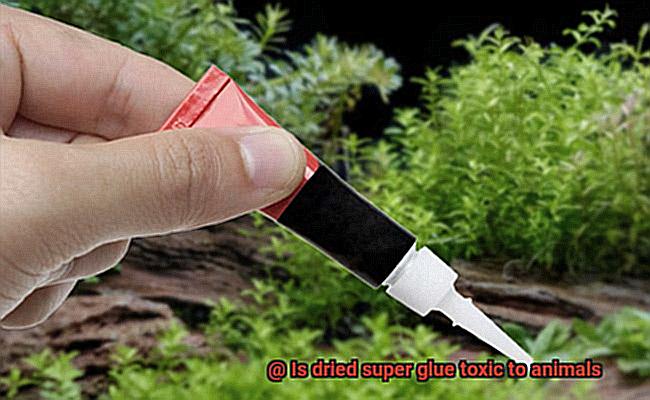
Mindful Usage:
Be mindful of where you use super glue in the house. Avoid using it in areas where pets have access or frequently spend time, such as on furniture or near their food and water bowls. Instead, designate a specific area for any DIY projects involving super glue that is off-limits to your furry friends. This way, you create a safe space for yourself while preventing any accidental exposure or ingestion by your pets.
Assessing the Situation:
If your pet does come into contact with dried super glue, it’s crucial not to panic. Carefully examine the affected area and assess the severity of the situation. If it seems like a small amount, it may be possible to remove it without causing harm to your pet. Gently try to peel off any loose glue from your pet’s fur or skin. However, if there is a large amount or if the glue has hardened and become stuck, it is best to seek veterinary assistance immediately. Attempting to remove it yourself may cause further harm and distress to your pet.
Consult a Veterinarian:
Pet owners should never attempt to remove dried super glue from their pets’ fur or skin using household products or tools. This can cause further harm and increase the risk of injury. It is always safer to consult a veterinarian who can provide appropriate guidance and treatment options. They have the expertise and experience to handle such situations safely and effectively. Remember, your veterinarian is your best resource in times of pet emergencies.
Immediate Action:
In case of accidental ingestion, contact your veterinarian immediately. They may advise you to induce vomiting or take other necessary steps based on the specific situation and your pet’s health condition. Quick action is crucial in such emergencies, as it can prevent the glue from causing further damage to your pet’s internal organs.
Treatment Options for Animals Affected by Dried Super Glue
Accidents happen, even to our beloved furry friends. Whether it’s a curious cat or a mischievous pup, pets can sometimes find themselves in sticky situations with dried super glue. In this article, we will explore the potential treatment options available to help animals affected by dried super glue. From assessing the situation to seeking professional veterinary advice, we will guide you through the steps to ensure your pet’s health and well-being.
Assessing the Situation:
The first step in treating an animal affected by dried super glue is to carefully assess the extent of the damage. Check for any visible signs of adhesive on your pet’s fur, skin, or sensitive areas like the eyes, nose, or mouth. Look out for signs of distress or discomfort as well. Remember to stay calm and proceed with caution.
Consult a Veterinarian:
When it comes to your pet’s health, it’s always best to seek professional advice. Contact your veterinarian immediately and explain the situation. With their expertise, they will guide you through the next steps based on the severity of the situation and your pet’s specific needs.
Seeking Medical Intervention:
If the glue has bonded to your pet’s fur or skin, it is important not to attempt removal forcefully. This can cause further harm. Instead, your veterinarian may recommend using a specialized adhesive remover or solvent designed for animal use. These safe products effectively break down the glue without causing harm.
Sedation for Sensitive Areas:
In some cases, if the dried super glue has bonded to sensitive areas like the eyes, nose, or mouth, your vet may need to sedate your pet before attempting removal. This ensures their safety and reduces the risk of injury during the process.
Promoting Healing and Preventing Infection:
Once the glue has been safely removed, your veterinarian may recommend additional treatments to promote healing and prevent infection. This may involve cleaning the affected area with a mild antiseptic solution and applying a soothing topical ointment or cream. These measures will help your pet’s skin or fur recover and prevent any potential infections.
Further Medical Interventions:
Depending on the severity of the damage caused by dried super glue, your pet might require additional medical interventions. Your veterinarian may prescribe pain management medication to alleviate any discomfort. Antibiotics may also be necessary to prevent or treat any potential infections. In severe cases, surgical intervention may be needed to address any significant damage. Your veterinarian will carefully assess your pet’s condition and provide the best course of action.
Monitoring and Follow-Up:
Closely monitor your pet for any signs of complications or worsening symptoms following the treatment. Follow all treatment recommendations provided by your veterinarian and attend any recommended follow-up visits. This ensures proper healing and recovery for your furry companion.
Conclusion
In conclusion, it is crucial to recognize that dried super glue can indeed be toxic to animals.
This adhesive contains harmful chemicals that can cause severe health issues if ingested by our furry friends. The toxic compounds in super glue can lead to digestive problems, respiratory distress, and even organ damage in animals.
If you suspect your pet has ingested dried super glue, seek immediate veterinary attention as time is of the essence.

